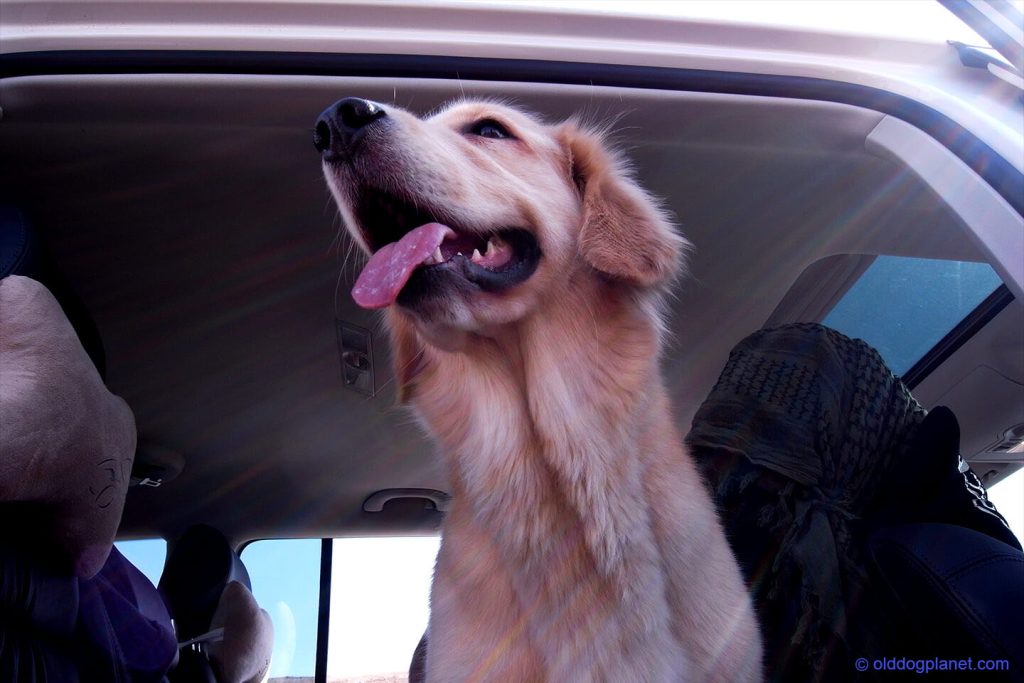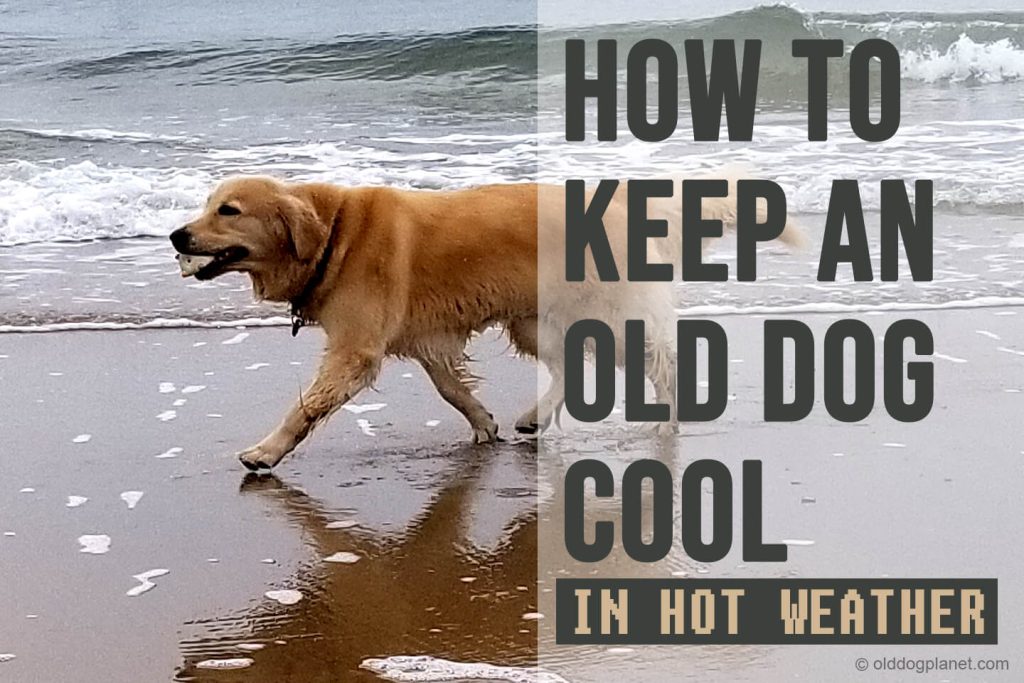How to help old dog into car? If your old dog weighs less than 24 pounds, you can easily pick it up and carry it into a sedan, minivan, or truck. However, if your old dog is a medium or large breed, it is not a good idea to carry it in your arms and lift it into the car, as this can cause physical harm to both you and the dog. My advice is to use some equipment to assist your elderly dog in getting on and off.
Senior medium and large breeds are more difficult to get into the car
Most medium and large breeds cannot jump into the trunk of a car as easily as they can when they are young. The following two factors are generally to blame:
Unbearable weight and obesity
Medium breeds typically weigh between 24-55 pounds, while large breeds typically weigh more than 55 pounds. The weakened joints, muscles, and heart function make it impossible for older dogs to easily jump into the back seat or trunk of a car with dozens of pounds of weight, especially when the older dogs are overweight, a type of common health problem in older medium/large breeds.
Joint disease
Joint disease is very common in older medium/large breeds, and certain breeds, such as German Shepherds, Labrador Retrievers, and Golden Retrievers, are especially prone to arthritis and other joint diseases, including the hereditary disease CHD.
The joint disease prevents the dog from moving freely, and the range of motion and pressure that the joint can withstand are greatly reduced. Walking on all fours is difficult enough, let alone jumping into the back seat or trunk of a car.
If your old dog suffers from both overweight and joint problems, getting her into the car the right way will keep her joints free from damage. Here are three practical ways based on my experience:
The safest way to get into the car: use a pet stroller
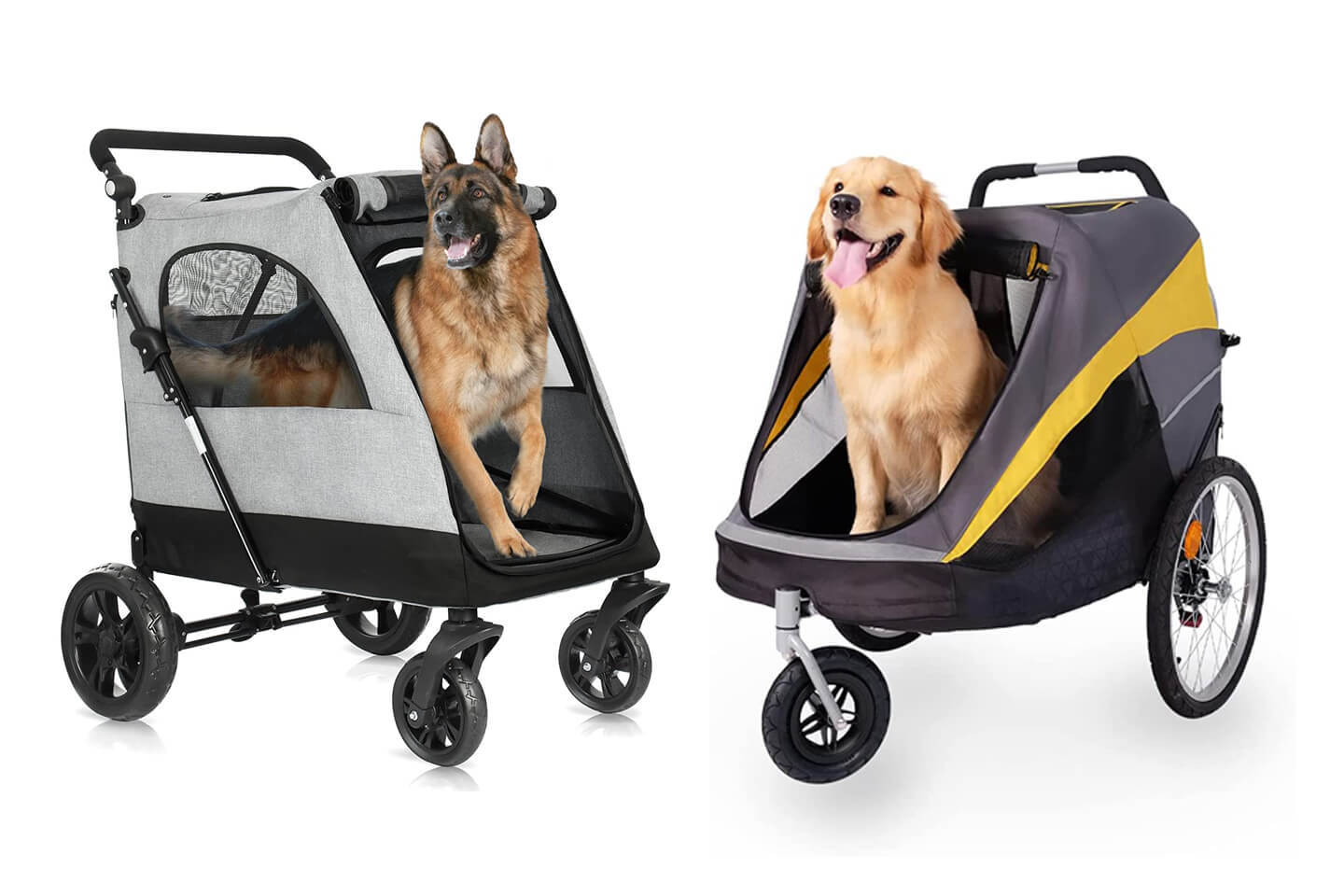
Applicable to:
- Get on to back seat of a sedan/hatch back
- Get on to floor of Minivan
- Get on to trunk with sill height less than 26 inches/650mm
The height of the chassis of the stroller suitable for large breeds is generally about 10 inches from the ground, and the height of the back seat of a car and the sill of a minivan is generally about 20 inches.
Climbing 20 inches high at a time is difficult for an older dog, but climbing 10 inches is twice as easy. Even if the dog has severe joint disease, he can climb up a 10-inch high stroller with his owner’s assistance.
Climbing from a 10-inch high stroller to the 20-inch-high back seat of a car or the floor of a minivan only requires another 10-inch climb, which makes the entire boarding process into two 10-inch climbs.
Best of all, when climbing into the car, the dog’s body can lean against the side walls of the stroller for extra support and to avoid falls.
In terms of safety, because the stroller is enclosed, the dog does not risk falling to the ground during the climbing process. The psychological burden on the dog is minimal, and it is especially suitable for dogs who are fearful of heights.
What should I look for in a stroller?
- Appropriate height from the ground. It is recommended that the height of the stroller is about 10 inches from the ground.
- Enough room in the stroller or the dog to turn around.
- A stable chassis, prevents the dog from shaking greatly when climbing from the stroller to the car.
Worth trying but risky way to get in the car: dog ramp or dog stairs
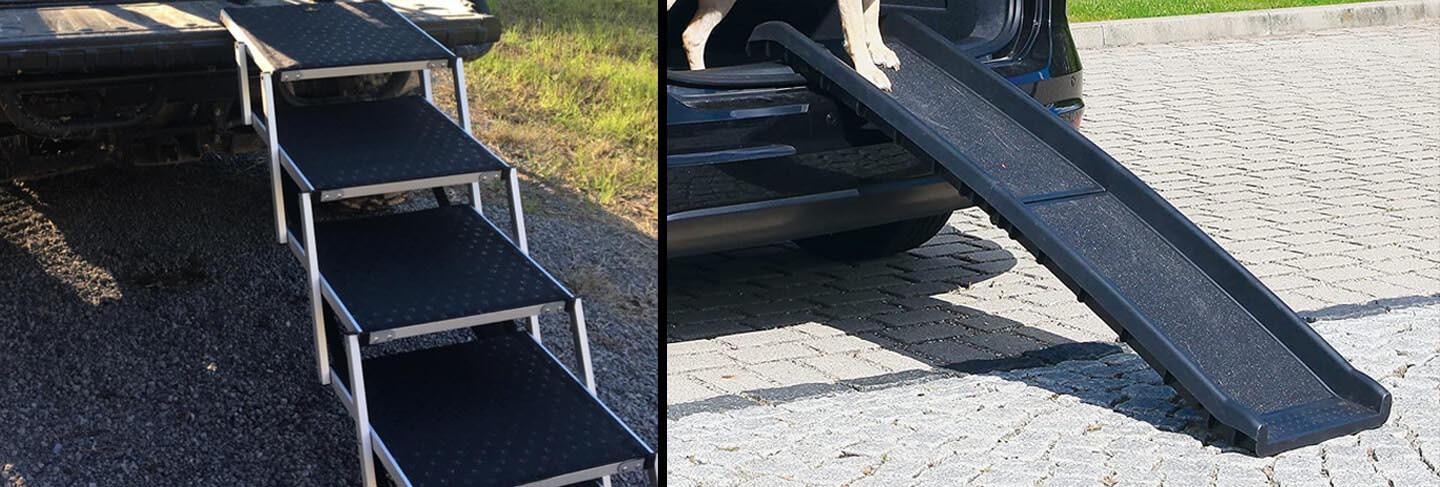
Applicable to:
- Trunk sill height more than 26 inches/650mm
If your old dog needs to get into the trunk of a SUV or Truck, that means they’ll have to climb at least 28-35 inches, which is a high climb that a stroller can’t help.
What you need at this point is a dog ramp or dog stairs. Such products are easily available in online stores. I will only give you a list of matters needing attention based on my experience, and will not recommend specific product models.
Risks of using a dog ramp or dog stairs
- The risk of not daring to walk on to it. Some dogs are naturally timid and afraid of heights and dare not go up and down the narrow and steep dog ramp or dog stairs. Before buying such products, please make sure that your old dog is brave enough to board this device. You can use a wide, flat plank in a safe place for your dog to try to walk on it, and she’s likely to be ready for using pet ramp or stairs to get on the SUVs and trucks if she can walk bravely on the plank.
- The risk of falling off its feet. Steepness and narrowness is the dog’s impression of ramp/stairs. If your senior dog has serious joint disease, it is recommended that at least 2 people stand on both sides of the ramp/stairs to assist and protect the older dog. And please put the ramp/stairs on the soft and flat ground to prevent the dog from being seriously injured when the dog falls to the hard and uneven ground.
The cheapest way to get on the car: lifting harness
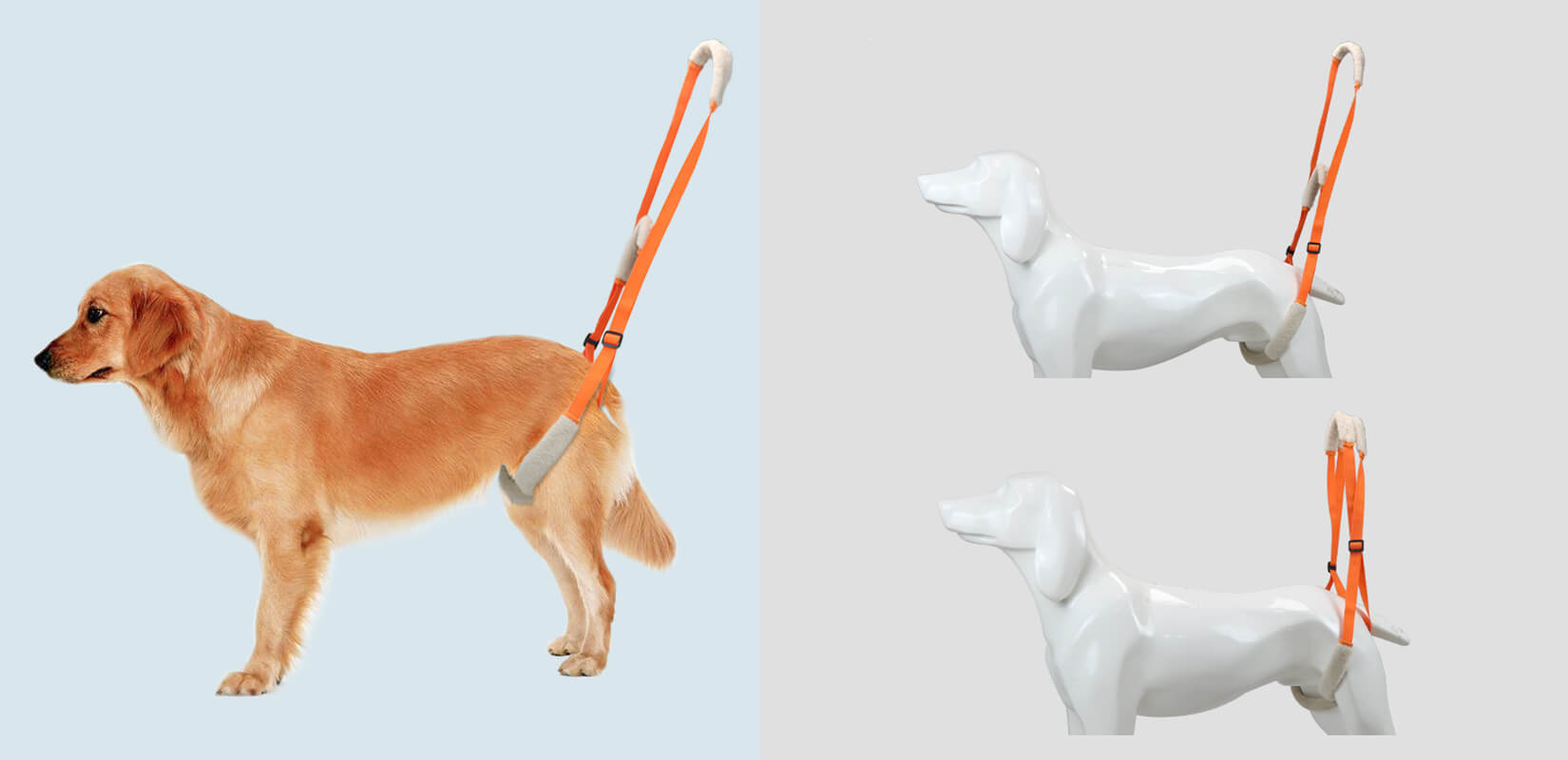
Applicable to:
- Dogs without serious disease in the front legs and spine.
- Climb no higher than the height that can be reached by the front leg when standing on the hind legs.
- Dog owners have strong arms and waist.
The lifting harness is cheap and easy to use, and it has a good auxiliary action for dogs with diseased hind leg joints. Before getting in the car, put the dog’s two front paws on the car, then use the lifting harness to lift the dog’s buttocks and hind legs, and send the dog up and forward into the car.
For dogs weighing more than 40 pounds, it is recommended that 2 people stand on both sides of the dog and bring up the lifting harness together.
Not recommended way to get in the car: the dog owner carries the dog into the car
- It can cause great harm to your back and lumbar spine if carrying dogs weighing more than 25 pounds into the car directly. It is necessary to know that some manual work requires that items weighing more than 50 pounds must be team lift by at least 2 people to avoid physical damage to workers.
- Incorrect and unstable lifting posture can also cause damage to the dog’s spine, hip joint and knee joint.
- It is possible for the dog to fall from the owner’s arms to the ground due to failure to hold it or the dog struggles. Due to the heavy weight of the medium and large breed, a fall of more than 40 cm may cause visceral damage.

